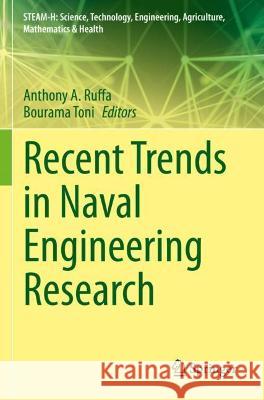Recent Trends in Naval Engineering Research » książka
topmenu
Recent Trends in Naval Engineering Research
ISBN-13: 9783030641535 / Angielski / Miękka / 2022
This multidisciplinary volume is the second in the STEAM-H series to feature invited contributions on mathematical applications in naval engineering. Seeking a more holistic approach that transcends current scientific boundaries, leading experts present interdisciplinary instruments and models on a broad range of topics. Each chapter places special emphasis on important methods, research directions, and applications of analysis within the field. Fundamental scientific and mathematical concepts are applied to topics such as microlattice materials in structural dynamics, acoustic transmission in low Mach number liquid flow, differential cavity ventilation on a symmetric airfoil, Kalman smoother, metallic foam metamaterials for vibration damping and isolation, seal whiskers as a bio-inspired model for the reduction of vortex-induced vibrations, multidimensional integral for multivariate weighted generalized Gaussian distributions, minimum uniform search track placement for rectangular regions, antennas in the maritime environment, the destabilizing impact of non-performers in multi-agent groups, inertial navigation accuracy with bias modeling.Carefully peer-reviewed and pedagogically presented for a broad readership, this volume is perfect to graduate and postdoctoral students interested in interdisciplinary research. Researchers in applied mathematics and sciences will find this book an important resource on the latest developments in naval engineering. In keeping with the ideals of the STEAM-H series, this volume will certainly inspire interdisciplinary understanding and collaboration.











